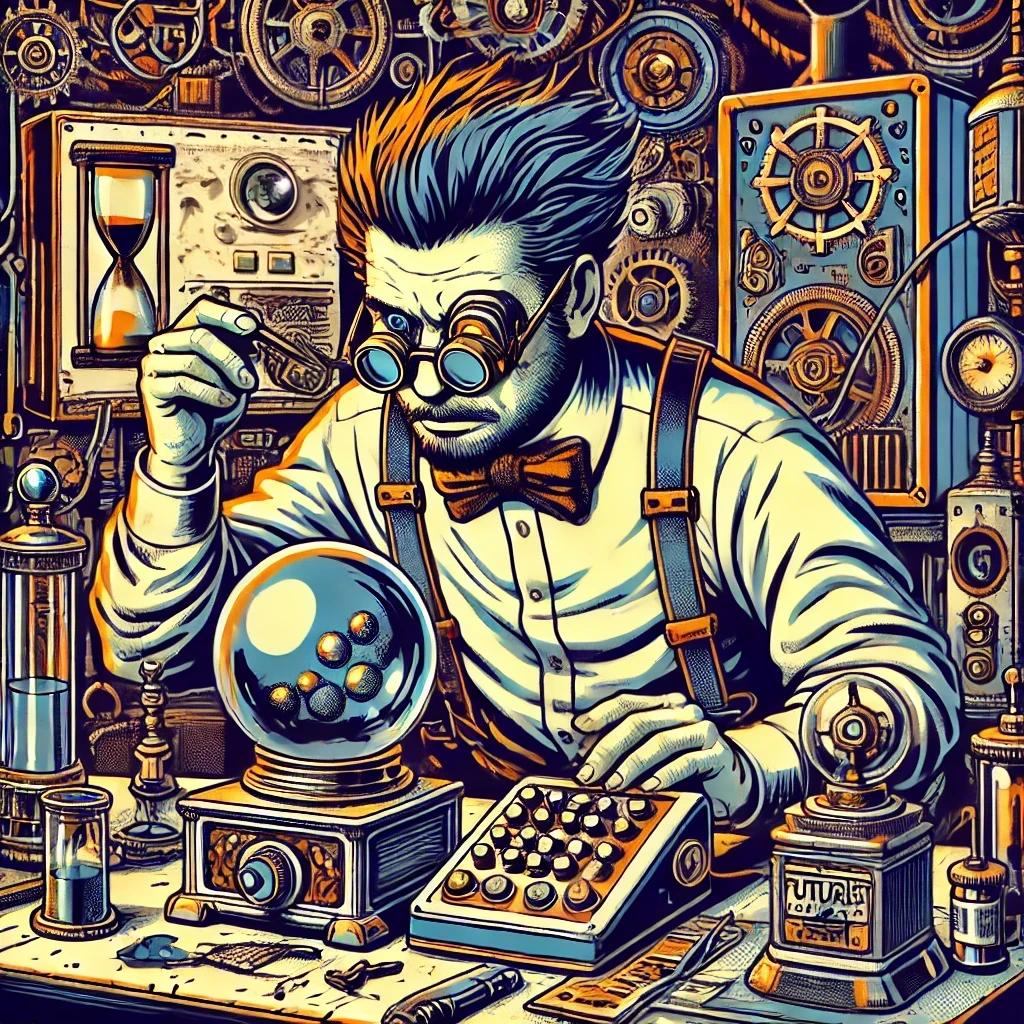Design futurism is like the rebellious, sci-fi nerd cousin of traditional design—constantly looking ahead into the far-off, sometimes dystopian, sometimes utopian, future. It’s about the strategic envisioning and creation of products, services, and systems that not only address today’s needs but anticipate future challenges and opportunities. This discipline transcends traditional design by integrating insights from technology trends, social changes, and environmental considerations, with a splash of speculative imagination. The goal? To inform and inspire people to think beyond today and ask tricky questions about how we can make the future, and what steps we need to take.
At its core, design futurism isn’t just about making sleek, sci-fi-looking gadgets (though those are certainly part of the appeal). It’s about combining speculative design, anticipatory thinking, and foresight methodologies to explore possible multiple futures and their implications. Imagine designing not just with the latest trends in mind, but with a mindset that constantly asks, “What will this look like, function like, and mean to people 10, 20, or 50 years from now?”
Several key principles underpin the practice of design futurism: Speculative design uses hypothetical scenarios and prototypes to explore and critique potential futures. By creating tangible representations of future possibilities, designers can provoke discussions, stimulate thought, and generate insights about societal values and technological trajectories. Think of it as crafting a “what if?” for the future—creating designs that might not be practical today but serve as thought experiments to challenge our assumptions and spark innovation (Dunne & Raby, 2013).
Anticipatory thinking involves proactive consideration of future trends and uncertainties. Designers use trend analysis, scenario planning, and foresight techniques (forecasting, back-casting, scenario analysis) to anticipate and prepare for possible future states, ensuring that designs, theories and ideas remain relevant and adaptable as the world evolves. It’s about staying ahead of the curve, making sure that when the future arrives, the designs don’t just survive—they thrive (Voros, 2003).
Despite its future orientation, design futurism maintains a strong focus on human needs and experiences. It emphasizes empathy and user-centric approaches to ensure that future technologies enhance human well-being and accessibility. After all, what’s the point of a shiny new technology if it doesn’t make life better for people or actually have a use?
Design futurism can manifest in various forms, such as the writing on this blog. It may also appear as an innovative product design, which, while sometimes theoretical, is about creating real-world artifacts that push the boundaries of what’s possible and stimulate thought on the world in which that artifact exists in. This could be anything from wearable tech that integrates seamlessly into daily life (as it is already starting to) to a possible product that may come into existence if we take our society and culture down certain paths. An example of this is the “Suicide Vending Machine” that my colleagues and I invented to highlight the lack of mental health care in Australia. This was a full size, working vending machine we built from scratch that contained a dozen or so grizzly ways to top ones-self. The machine never actually dispensed these darkly functional products, but its presence cause quite a stir at the University, prompting the intended conversation of why such a machine needed to exist at all, and why someone in our ultra-consumer society would try and profit of someone else’s poor mental state (no one would ever actually do that, would they?)
Design futurism is also deeply interdisciplinary, sitting at the intersection of industrial design, interaction design, technology, and futures studies. It’s where design meets science fiction, philosophy, and social theory. Designers working in this space often collaborate with technologists, scientists, and even artists to create visions of the future that are as imaginative as they are plausible. For me, a massive electronics, coding, and sci-fi nerd, design futurism takes the interesting bits of futurism which is often financial, business or politically based, and throws it into the wonderfully holistic landscape of design and systems thinking.
References:
Dunne, A., & Raby, F. (2013). Speculative Everything: Design, Fiction, and Social Dreaming. MIT Press.
Voros, J. (2003). A generic foresight process framework. Foresight, 5(3), 10-21.

